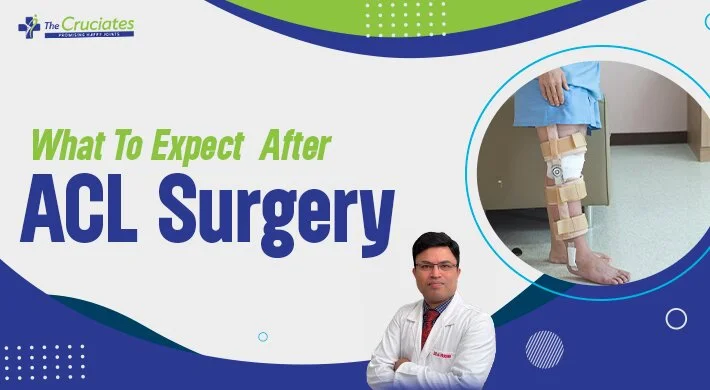In almost all cases, you can start putting weight on your leg within 24 hours of surgery, and the rehabilitation starts from the first day. The process will take nearly 3 to 6 months, depending on the severity of the injury and your level of commitment in following through with therapy sessions and making lifestyle changes to support your recovery after ACL surgery. You can expect some pain in your knee after ACL surgery, but most pain subsides within a few days. Here’s what you can expect in the weeks after ACL surgery.
You might have heard so many stories regarding patients returning to sport too quickly. No matter how good your ACL surgeon is, and how well the ACL surgery goes, your recovery is only as good as your dedication to rehab. Expecting that healing will just take place on its own and you can get back to full strength and agility after six months, without putting in the work is foolishness. Combination of BEST ACL SURGEON and BEST PHYSIOTHERAPHY PROTOCOLS work well for you.
Table of Contents
What to expect after an ACL injury
It’s common to experience a popping sensation or hear a pop at the time of ACL ligament injury. Immediately after an injury, you may not be able to bear weight on the injured leg. 70% people will experience swelling in the knee area and some knee instability. RICE therapy is highly recommended in acute conditions and will be helpful in reducing pain and swelling. Resting your affected limb is essential for your recovery. You should limit movement as it may aggravate your injury. You can use crutches, walker or cane to help you get around when needed.
Right after your surgery
The First and Second Week
• Achieving a range of motion in your knee from complete extension to 90-degree bend.
• Focus on strengthening your thigh muscles mainly quadriceps.
3-6 Weeks After Surgery
• Quadriceps strengthening using light weights and resistance bands
• Full range of motion should be gained by the end of 4 weeks
• Knee protection with brace for at least 3-4 weeks.
• Stair climbing, stationary bike and cross trainer can be used.
Recommended :- Common Reasons for Sports Injuries
7-12 Weeks After Surgery
After 12 weeks
After months of rehab, it may feel like your return will be soon. It can take another 3-6 months before you are back to full strength in sports. While you’re waiting, focus on strengthening and regaining power. Running on a treadmill usually permitted at three months, but check with your doctor first.
• You are allowed running
• You can participate in friendly games but professional and contact sports not allowed
• Focus on strengthening and regaining power
• By 6 months you should be able to return to professional sports after a return to sports fitness test
The Cruciates is a team of highly experienced and skilled surgeons who are in the sports medicine field from a long time and have dealt with complicated sports injuries. Dr. Nagendra Prasad is one of the best arthroscopy surgeons in India leads the team. The Cruciates is committed to deliver high-quality services and would like to make sure that, you are satisfied with our work. The team Cruciates provides customized treatment and follow up to each patient to make sure that everyone will achieve desired level of recovery and rehabilitation to ensure early return to sports.
Recommended :- Best Ligament Surgeon For Sports Injury

